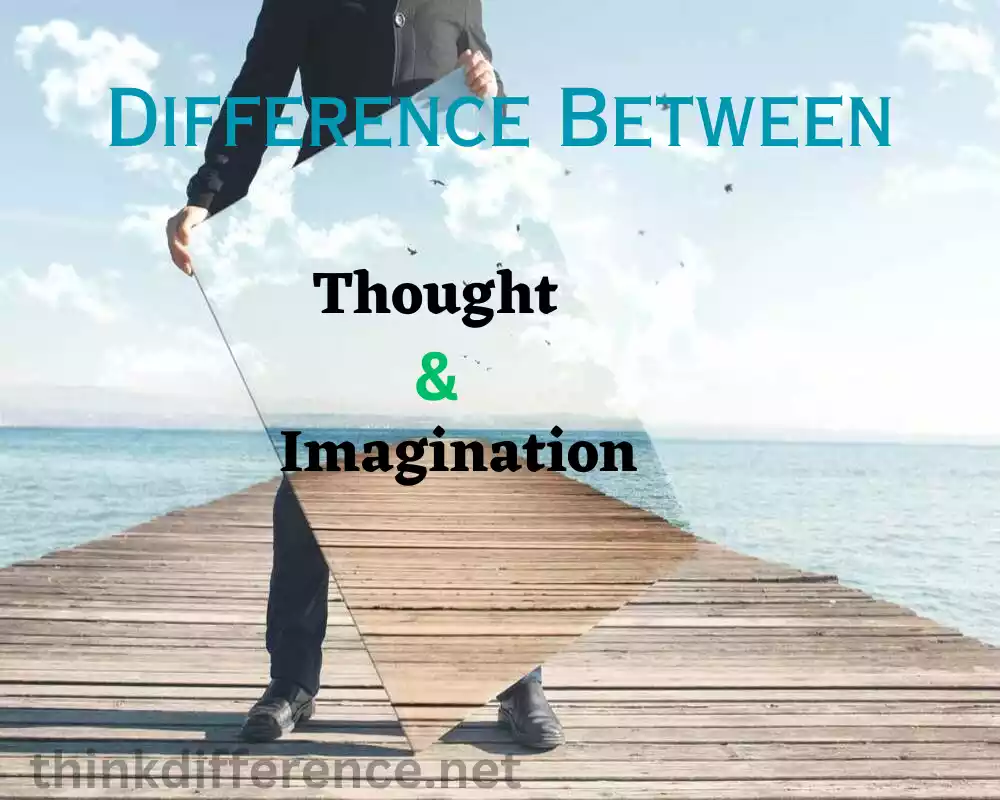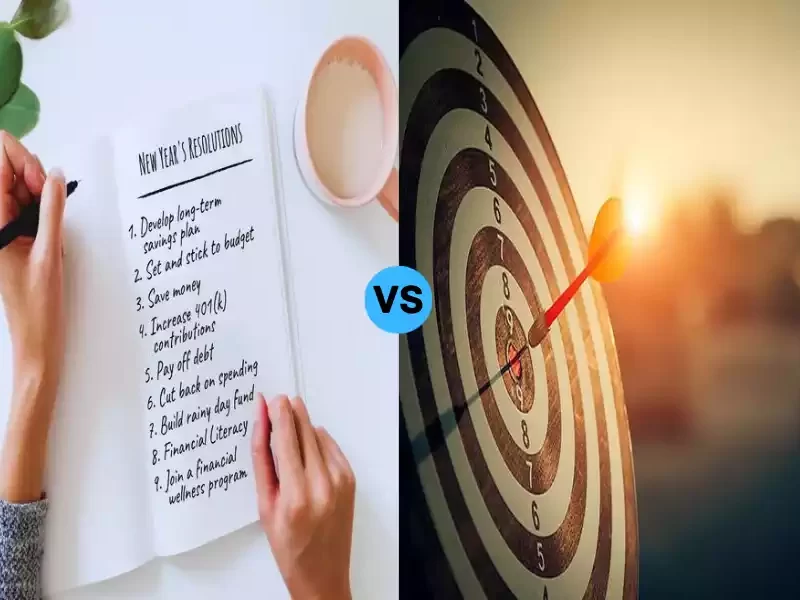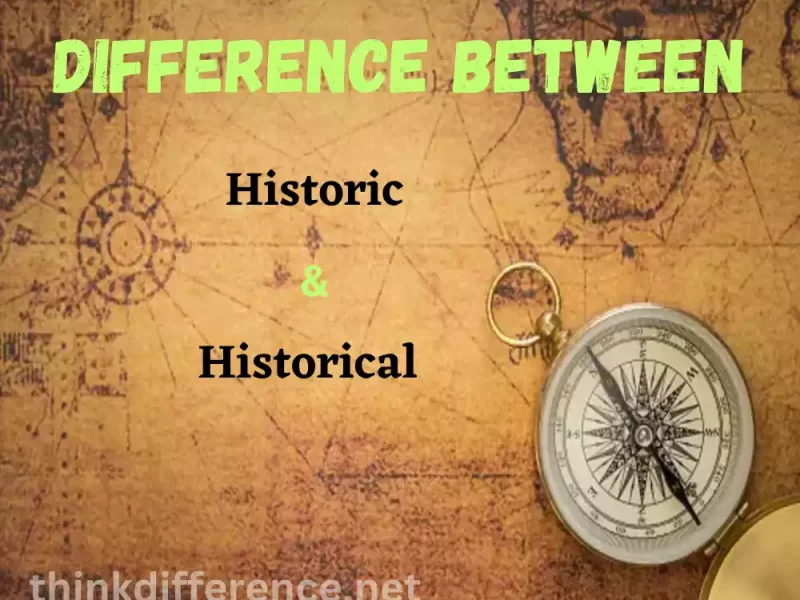Thought and Imagination both play essential roles in human thought processes and creativity, yet their difference must be understood to fully grasp all its facets. To truly grasp human thoughts it is imperative to differentiate between imagination and thought as both play an essential part in understanding various facets of thought process. Thought is the process of rationalizing information using past experiences, knowledge and logic to analysis a problem and find its resolution before making decisions and choices about its resolution or management.
As well as this cognitive process, imagination also provides us a way to escape reality, create new ideas, conceive of possibilities and engage in creative or imaginative thought. Examining their unique features and interactions allows us to gain more insight into how imagination and thought can enhance cognitive capacities while changing how we see the world around us.
Definition of Thought and Imagination
Definition of Thought:
Thought is defined as any conscious action involving conscious manipulation and processing of information. It involves thinking through analysis, reflection and interpretation on concepts, ideas and experiences; including analysis by way of analysis, reflection or interpretation on such experiences as well as experience itself.
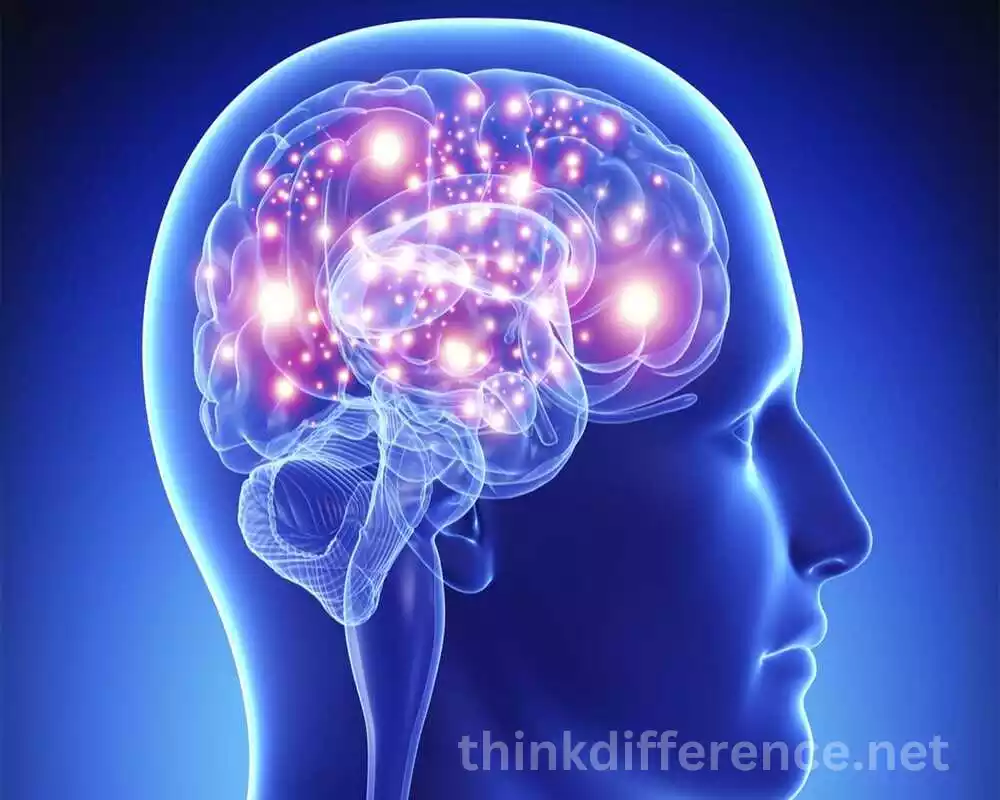
Thinking can also involve analytical or logical thought which involves memory capacity, attention span and problem-solving abilities as cognitive faculties such as memory or attention span capacities to solve complex problems more quickly and successfully than any other method can. Thought is key when making decisions or planning actions.
Definition of Imagination:
Imagine is the ability for our brains to create thoughts, images or concepts not immediately noticeable to sensory perception, nor resulting from actual life experience. Imagine involves exploring data to form new patterns, associations and possibilities which open new avenues of creativity – from artful expressions beyond conventional boundaries to innovating beyond them all.
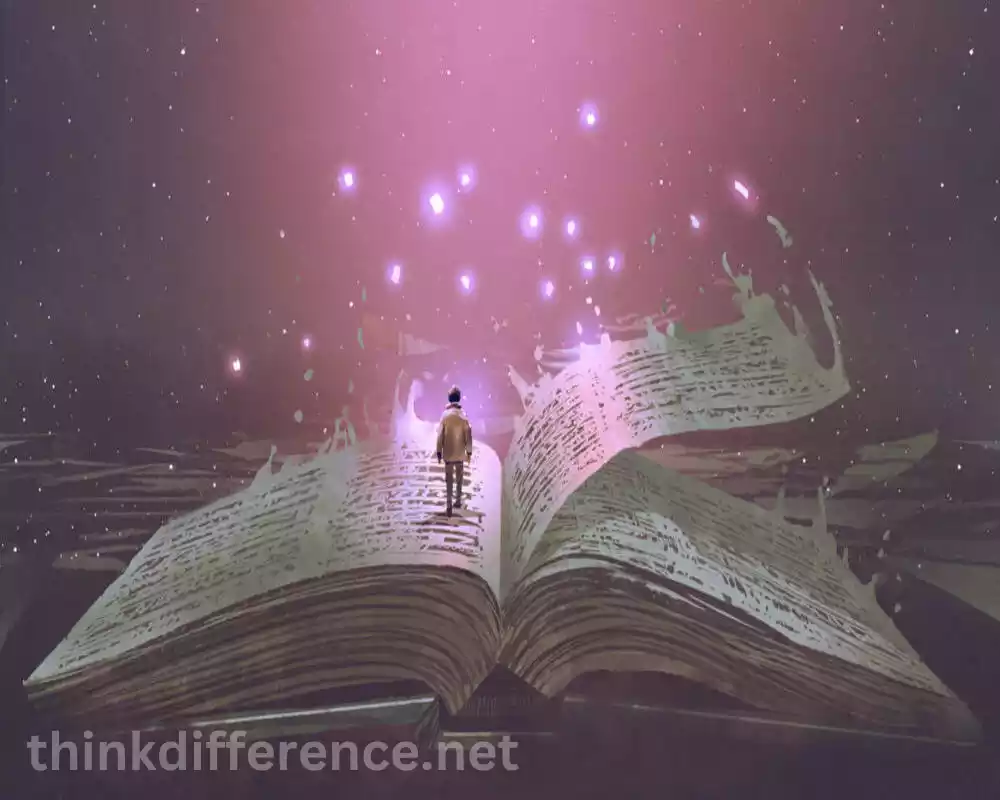
Imagine is often an emotional reaction mixed with intuition which leads to unexpected perspectives of our surroundings as it creates creative solutions while broadening perspective of everyday experiences through an unconventional lens.
Importance of Thought and Imagination
Importance of Thought:
- Problem-solving and Critical Thinking: Thought is essential for analyzing complex problems, evaluating options and making informed decisions. It enables logical reasoning and systematic examination of information, leading to effective problem-solving and critical thinking skills.
- Learning and Knowledge Acquisition: Thought facilitates the acquisition and assimilation of knowledge. By engaging in thoughtful reflection, individuals can better understand, retain and apply new information, promoting continuous learning and intellectual growth.
- Communication and Expression: Thought plays a fundamental role in verbal and written communication. It allows individuals to organize their ideas, articulate their thoughts clearly and express themselves effectively, fostering effective communication and exchange of information.
- Self-reflection and Self-awareness: Thought is an effective means for individuals to investigate their values, beliefs and actions. Helping to foster personal awareness as well as development. Through it all, reflection allows oneself to self-evaluate more accurately while expanding one’s awareness and developing deeper insight.
Importance of Imagination:
- Creativity and Innovation: Imagineering is key for creative innovation and development. It enables individuals to generate new ideas, think outside the box and envision novel solutions to problems. Imagination fuels artistic expression, scientific discoveries and technological advancements.
- Empathy and Perspective-taking: Imagination plays a vital role in understanding and relating to others’ experiences. By imagining oneself in someone else’s shoes, individuals can develop empathy, compassion and a broader perspective on different situations, fostering social understanding and cooperation.
- Emotional and Psychological Well-being: Imagination provides an outlet for emotional expression and exploration. It allows individuals to process and understand complex emotions, create mental escapes and engage in positive visualization, contributing to overall psychological well-being and stress reduction.
- Goal Setting and Motivation: Imagination helps individuals envision their desired outcomes and goals. By imagining future possibilities and visualizing success, individuals can enhance motivation, drive and goal-directed behavior, leading to increased persistence and achievement.
Thinking and imagination are central aspects of human cognitive processing and play an essential part in various areas of social and personal development. Thinking provides rational analysis while imagination provides creative thought processes as well as increased problem-solving abilities.
Comparison table of Thought and Imagination
Here is a comparison table highlighting the key differences between thought and imagination:
| Aspect | Thought | Imagination |
|---|---|---|
| Nature | Cognitive process | Cognitive process |
| Function | Reasoning, analysis, problem-solving | Creativity, envisioning possibilities |
| Focus | Analysis, evaluation, making sense | Ideation, exploration, thinking beyond reality |
| Basis of Operation | Existing knowledge, information, experiences | Free-flowing, unconstrained by reality |
| Consciousness | Mostly conscious and deliberate | Can involve both conscious and unconscious processes |
| Purpose | Problem-solving, decision-making, understanding | Fostering creativity, generating new ideas |
| Outcome | Reasoned judgments, logical conclusions | New perspectives, creative works, idea generation |
| Limitations | Bound by existing knowledge and logic | Unrestricted by knowledge and reality |
Relationship between Thought and Imagination
Thinking and imagination have an intricate interrelationship. Although both cognitive functions exist separately.
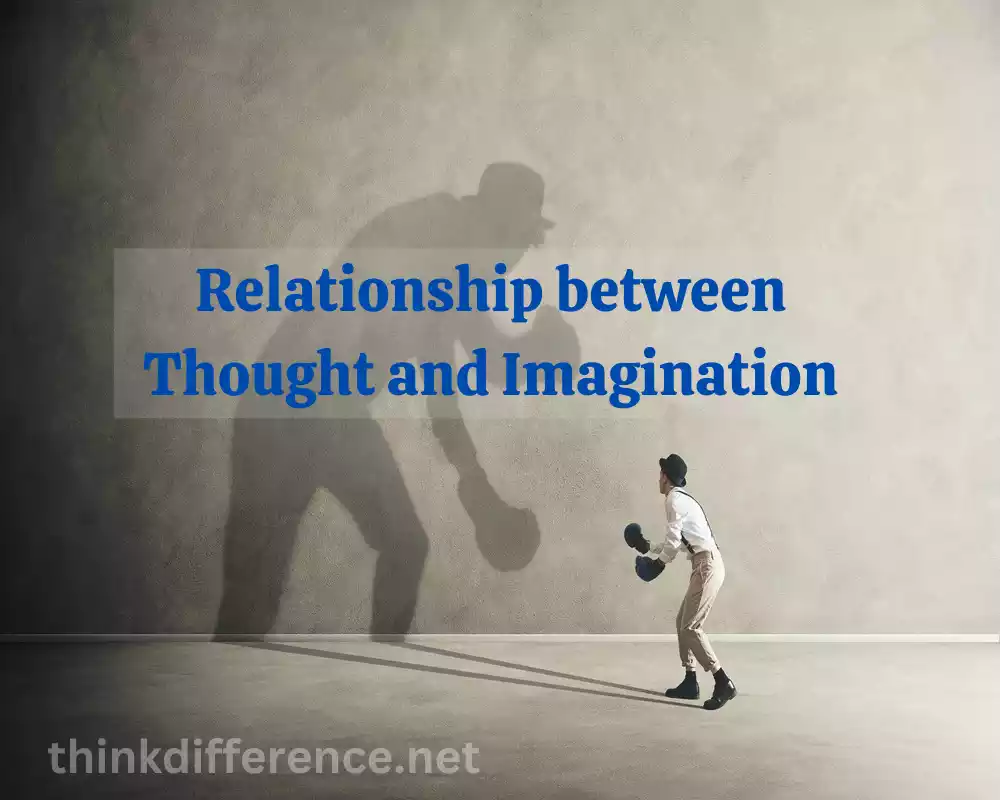
They often work in concert together and influence each other in various ways:
- Thought shaping imagination: Thought provides the foundation for imagination to flourish. The knowledge, information and logical reasoning derived from thought help structure and guide imaginative thinking. It sets the boundaries and constraints within which imagination operates, ensuring coherence and relevance in imaginative ideas and scenarios.
- Imagination fueling thought: Imagination fuels thought by providing novel ideas and possibilities. Imaginative thinking can inspire new ways of approaching problems, generating alternative perspectives and sparking creative solutions. Imagination broadens the scope of thought, encouraging exploration and innovation.
- Collaborative problem-solving: Thought and imagination often collaborate in problem-solving. Initially, thought analyzes the problem, gathers relevant information and evaluates potential solutions. Imagination then comes into play, generating imaginative ideas and scenarios that can be integrated and refined through further thought processes. This collaborative process enhances the effectiveness and creativity of problem-solving endeavors.
- Synergy in creativity: Thought and imagination synergize in creative endeavors. Thought helps evaluate and refine imaginative ideas, ensuring they align with logical reasoning and practical considerations. Imagination injects creativity, originality and fresh perspectives into thought processes, enhancing the generation of innovative and imaginative outcomes.
- Balancing rationality and creativity: The interplay between thought and imagination enables a balance between rationality and creativity. Thought provides the rational framework for logical thinking, critical analysis and decision-making. On the contrary, imagination can spur creativity, innovation and discovery of untapped possibilities, expanding thought beyond its usual range.
- Personal growth and development: Thought and imagination contribute to personal growth and development. Thought facilitates reflection, self-awareness and deep understanding of oneself and the world. Imagination allows for self-expression, envisioning future goals and exploring new ideas and perspectives. Together, they foster cognitive flexibility, adaptability and holistic thinking.
Thought and imagination are closely intertwined and mutually influential processes. They collaborate in problem-solving, enhance creativity and enable a balanced approach to rationality and creativity. Recognizing and harnessing their relationship can lead to enhanced cognitive abilities, innovative thinking and personal development.
The Cognitive Process of Thought and Imagination
The cognitive processes of thought and imagination involve distinct mechanisms and operations:
Cognitive Process of Thought:
- Information Processing: Thought involves the processing of information acquired through sensory perception, memory and knowledge. It includes the encoding, storage, retrieval and manipulation of information within the cognitive system.
- Attention and Focus: Thought requires selective attention, focusing cognitive resources on specific stimuli or mental representations relevant to the task at hand. Attention helps filter and prioritize information, allowing for efficient thought processes.
- Analysis and Reasoning: Thought involves logical analysis and reasoning to examine and evaluate information. It encompasses the ability to break down complex concepts or problems into manageable parts, identify patterns and relationships and draw logical inferences.
- Problem-solving and Decision-making: Critical thinking plays an indispensable part in problem-solving and making informed decisions. It involves identifying a problem, generating potential solutions, evaluating their feasibility and selecting the most appropriate course of action based on logical reasoning and desired outcomes.
- Critical Thinking: Thought encompasses critical thinking, which involves evaluating and assessing the validity, credibility and reliability of information or arguments. It requires careful analysis, skepticism and the ability to recognize biases, fallacies and logical inconsistencies.
Cognitive Process of Imagination:
- Mental Simulation: Imagination involves the mental simulation of scenarios, ideas or concepts that are not immediately present in the external environment. It enables individuals to create mental representations and simulate experiences in their minds.
- Visualization: Imagination often relies on visual imagery, allowing individuals to mentally visualize and create vivid mental pictures. Visualization helps in the creation and exploration of imagined ideas, scenarios and possibilities.
- Creativity and Idea Generation: Imagination fosters creativity by generating new and original ideas. It involves the exploration of unconventional associations, patterns and connections, leading to innovative and novel conceptualizations.
- Empathy and Perspective-taking: Imagination enables individuals to imagine themselves in the perspectives and experiences of others. It facilitates empathetic understanding, promoting social cognition and fostering a deeper understanding of different viewpoints.
- Mental Flexibility: Imagination involves the ability to mentally transcend conventional boundaries, rules and constraints. It allows for flexible thinking, breaking free from fixed concepts and envisioning alternative possibilities and solutions.
Both imagination and thought play an essential part in human mental health. With thinking focusing on logic analysis, problem-solving, decision making and making choices. While imagination provides opportunities to be creative while discovering innovative concepts. While they differ in their processes, they often work together, complementing and influencing each other to enhance cognitive abilities and promote creative thinking.
Role of Thought and Imagination in Problem Solving
Thinking and imagination play key roles in problem-solving processes, complementing each other in this regard. They help by:
Role of Thought in Problem Solving:
- Analysis and Understanding: Thought helps in breaking down complex problems into smaller, manageable components. It involves analyzing the problem, identifying its underlying causes and understanding the relationships between different variables or factors involved.
- Logical Reasoning: Thought employs logical reasoning to evaluate potential solutions and their consequences. It helps in weighing the pros and cons, considering the available evidence and making informed decisions based on sound judgment.
- Critical Thinking: Thought involves critical thinking skills, which allow for the evaluation and assessment of information, arguments and assumptions. It helps identify biases, detect fallacies and scrutinize the validity and reliability of data, ensuring that problem-solving approaches are grounded in objective and well-reasoned thinking.
- Systematic Approach: Thought promotes a systematic approach to problem-solving. It helps in devising step-by-step plans or strategies, considering alternative options and organizing the problem-solving process to ensure comprehensive coverage and effective utilization of available resources.
Role of Imagination in Problem Solving:
- Idea Generation: Imagination fuels the generation of creative and innovative ideas during problem-solving. It allows individuals to think beyond conventional boundaries, envisioning novel solutions, perspectives and approaches that may not have been previously considered.
- Visualization of Possibilities: Imagination enables the visualization of potential outcomes and scenarios. By mentally simulating different possibilities, individuals can explore the consequences of different solutions, anticipate challenges and gain a deeper understanding of the problem and its potential resolutions.
- Unconventional Connections: Imagination helps in making unconventional connections between seemingly unrelated concepts or ideas. It encourages thinking “outside the box” and promotes the synthesis of diverse knowledge and perspectives, leading to fresh insights and alternative problem-solving approaches.
- Motivation and Persistence: Imagination plays a role in problem-solving by fostering motivation and persistence. It allows individuals to mentally envision the desired outcome, providing a sense of purpose and inspiration to overcome obstacles and persevere in finding solutions to complex problems.
Thought and imagination work hand in hand during problem-solving. Thought provides the logical analysis, critical thinking and systematic planning, while imagination contributes creativity, idea generation and visualization of possibilities. Integrating both thought and imagination in problem-solving processes leads to more comprehensive, innovative and effective solutions.
Enhancing Creativity through Thought and Imagination
Thinking and imagination can be used together as powerful tools to foster and promote creativity. Here are a few techniques they can be combined for increased creative output:
- Divergent Thinking: Thought and imagination can be combined to engage in divergent thinking, which involves generating multiple ideas, possibilities and solutions. Thought provides the analytical framework to evaluate and refine these ideas, while imagination allows for the free-flowing generation of diverse and unconventional concepts.
- Associative Thinking: Imagination enables the creation of new associations and connections between different concepts or ideas. Thought can then be employed to critically analyze and assess the viability and relevance of these associations, helping refine and develop creative insights and innovative solutions.
- Mental Simulation and Visualization: Imagination allows individuals to mentally simulate and visualize different scenarios and possibilities. Thought can then be applied to critically analyze and evaluate the potential outcomes and implications of these imagined scenarios, leading to a deeper understanding and refinement of creative ideas.
- Overcoming Constraints: Thought and imagination can work together to overcome constraints and limitations. Thought helps identify and understand the constraints within a given problem or situation, while imagination allows individuals to imagine possibilities that transcend these constraints. By combining the two, creative solutions that go beyond conventional boundaries can be explored.
- Reflection and Iteration: Thought enables reflective thinking, which involves critically evaluating and analyzing creative ideas. Imagination, in turn, allows for the generation of new insights and perspectives based on the outcomes of this reflection. This iterative process of thought and imagination can lead to continuous improvement and refinement of creative ideas.
- Embracing Uncertainty: Imagination helps individuals embrace uncertainty and tolerate ambiguity, allowing for the exploration of unconventional ideas and solutions. Thought provides the structure and analysis to assess the feasibility and potential value of these uncertain ideas, facilitating a balance between imaginative thinking and rational evaluation.
- Cross-Disciplinary Thinking: By combining thought and imagination, individuals can draw from diverse disciplines and perspectives. Imagination allows for the integration of ideas and concepts from different domains, while thought facilitates the synthesis and evaluation of these interdisciplinary connections, leading to innovative and multidimensional creative outputs.
By harnessing the synergistic relationship between thought and imagination, individuals can cultivate and enhance their creativity. Engaging in thoughtfully guided imaginative thinking can spark new ideas, promote innovative problem-solving, and lead to creative breakthroughs in various fields and endeavors.
Thought and Imagination in Decision Making
Imagination and mind both play an essential part in decision-making processes, complementing each other to facilitate more balanced, effective choices. Here is how they each play their part:
Thought in Decision Making:
- Analysis and Evaluation: Thought involves logical analysis and evaluation of available information, options and potential outcomes. It helps in objectively assessing the pros and cons of different choices and considering the consequences of each option.
- Rational Reasoning: Thought employs rational reasoning to weigh the evidence, consider logical implications and identify potential biases or fallacies in decision-making. It helps individuals make informed and logical judgments based on objective evaluation.
- Risk Assessment: Thought enables individuals to assess the risks associated with different decisions. It involves considering potential challenges, uncertainties and their probabilities, which can guide individuals in choosing the option with the best risk-reward balance.
Imagination in Decision Making:
- Visualization of Outcomes: Imagination allows individuals to mentally simulate and visualize the potential outcomes of different decisions. It helps in envisioning future scenarios, exploring the emotional and practical implications of each choice, and gaining a deeper understanding of the consequences.
- Creativity and Alternative Perspectives: Imagination fosters creativity, enabling individuals to generate new ideas and think beyond conventional options. It encourages exploring alternative perspectives and considering possibilities that may not be immediately evident through logical analysis alone.
- Intuition and Gut Feelings: Imagination plays a role in decision-making by tapping into intuitive insights and gut feelings. It allows individuals to draw on subconscious knowledge and experiences, providing additional information and perspectives that may influence the decision-making process.
- Emotional Considerations: Imagination helps individuals consider the emotional aspects of decision-making. Acknowledging emotional reactions involves considering all involved. Making choices which align with personal values, relationships and health goals may require further discussion and negotiation between people involved.
The interplay between thought and imagination in decision-making involves thoughtful analysis, logical evaluation and imaginative exploration. While thought provides the analytical framework and rational reasoning, imagination enriches the decision-making process by considering alternative perspectives, envisioning outcomes and incorporating intuitive insights. Integrating both thought and imagination leads to more comprehensive, balanced and creative decision-making, considering both objective and subjective factors.
Thought and Imagination in Learning and Memory
Thought and imagination are integral to the processes of learning and memory, contributing in distinct ways. Here’s how they are involved:
Thought in Learning and Memory:
- Comprehension and Understanding: Thought is crucial for comprehension and understanding of new information. It involves active cognitive processing, such as analyzing, interpreting and integrating new knowledge with existing mental frameworks. Thought facilitates the organization and synthesis of information, leading to better understanding and retention.
- Critical Thinking: Thought promotes critical thinking skills, which are essential for evaluating and analyzing information. It helps individuals assess the credibility, relevance and accuracy of the information encountered during the learning process. Critical thinking enables individuals to distinguish between reliable and unreliable sources, identify biases and draw logical conclusions.
- Problem-Solving and Application: Thought plays a role in applying learned knowledge and skills to solve problems or perform tasks. It involves the retrieval of relevant information from memory, analysis of the problem and the generation of appropriate strategies or solutions. Thought guides the application of learned concepts in real-world contexts.
- Metacognition: Thought encompasses metacognitive processes, which involve monitoring and regulating one’s own thinking and learning. Self-reflection and evaluation by oneself as well as self-regulation learning strategies should all play a part here. Thought helps individuals identify areas of strength and weakness, adjust their learning approach and improve their overall learning outcomes.
Imagination in Learning and Memory:
- Mental Representation: Imagination assists in the creation of mental representations of information. It allows individuals to visualize and mentally manipulate concepts, ideas and relationships. Imagining vivid mental images can enhance encoding and retention of information, making it more memorable.
- Creativity and Insight: Imagination fuels creativity and insight in the learning process. It enables individuals to generate new connections, novel perspectives and innovative ideas. Imagination encourages thinking beyond conventional boundaries, fostering creative problem-solving and encouraging unique approaches to learning.
- Mnemonic Devices: Imagination can be employed to create mnemonic devices or mental associations that aid in memory retrieval. By using imaginative techniques like visual imagery, storytelling or imaginative analogies, individuals can enhance their memory and recall of information.
- Emotional Engagement: Imagination engages emotions in the learning process, making it more meaningful and memorable. By imagining scenarios or applying personal experiences, individuals can emotionally connect with the subject matter, enhancing motivation and facilitating deeper encoding and retrieval of information.
Thought and imagination work together to facilitate effective learning and memory processes. Thought provides the analytical framework, critical thinking and problem-solving skills, while imagination enhances comprehension, creativity and emotional engagement. By integrating thought and imagination, individuals can optimize their learning experiences, improve retention and foster a deeper understanding of the material.
Cultural and Historical Significance of Thought and Imagination
Thought and imagination hold immense cultural and historical significance, shaping human progress, creativity and the development of societies. Here are some aspects of their cultural and historical significance:
- Cultural Expression: Thought and imagination are fundamental to cultural expression. Culture fosters artistic, literary and musical creation that expresses values, beliefs or experiences associated with it. They give voice to cultural identity, preserving traditions, and fostering innovation.
- Scientific and Technological Advancements: Thought and imagination have been instrumental in scientific and technological advancements throughout history. They drive the curiosity to explore and understand the natural world, inspiring scientific inquiry, discoveries and innovations that have transformed societies and propelled human progress.
- Philosophy and Intellectual Inquiry: Thought is at the core of philosophical and intellectual inquiry, informing our understanding of life ethics and humanity itself. Philosophical thought and imaginative thinking have sparked debates, challenged societal norms and expanded the realms of knowledge and understanding.
- Social Change and Movements: Thought and imagination have played pivotal roles in social change and movements. They inspire visions of a better society, fuel activism and drive the pursuit of social justice. Imagination helps envision alternative possibilities and challenges existing social structures, leading to transformative movements throughout history.
- Cultural Evolution and Adaptation: Thought and imagination have influenced cultural evolution and adaptation. They enable societies to adapt to changing circumstances, envision new social systems and innovate in response to challenges. Cultural resilience helps societies adapt and respond to changes in politics, society and environmental conditions.
- Preservation of Cultural Heritage: Thought and imagination contribute to the preservation of cultural heritage. They inspire efforts to document, interpret and pass down cultural knowledge, stories and traditions from one generation to another. Imagination allows for the creative interpretation and reinterpretation of cultural heritage, keeping it alive and relevant.
- Collective Memory and Identity: Thought and imagination contribute to the construction of collective memory and identity. They shape narratives, myths and legends that connect individuals to their cultural and historical roots. Ethnographies provide people with a common knowledge of history and continuity within societies and communities.
Thought and imagination have played profound roles in shaping cultural and historical landscapes. They have fueled creativity, scientific advancements, philosophical inquiry, social change and the preservation of cultural heritage. Recognizing their cultural and historical significance allows us to appreciate their impact on human progress, creativity and the formation of societies.
The Limits of Thought and Imagination
While thought and imagination are powerful cognitive processes, they do have certain limitations. Here are some of the key limits associated with thought and imagination:
- Subjectivity and Bias: Thought and imagination are influenced by individual perspectives, beliefs and biases. As humans operate within cognitive and social structures that constrain them, inaccurate interpretations or distortions of reality may arise due to this limitation. Biases, such as confirmation bias or cultural biases, can limit the objectivity and accuracy of thought and imagination.
- Incompleteness and Oversimplification: Thought and imagination often simplify complex phenomena to make them more understandable. Oversimplifying can result in leaving out important subtleties and details necessary for an in-depth knowledge. The complexity of certain concepts or phenomena may surpass the capacity of thought and imagination to fully grasp and represent them accurately.
- Constraints of Knowledge and Experience: Thought and imagination rely on existing knowledge and experiences as building blocks. If there are gaps in knowledge or limited experiences, it can restrict the range and depth of thought and imagination. Lack of exposure to diverse perspectives and experiences may limit the scope of imaginative thinking and hinder the generation of creative ideas.
- Constraints of Logic and Reality: Thought operates within the framework of logical reasoning and rationality. Logical thinking can be useful, yet it cannot always capture all human interactions or potentials. Imagination can sometimes envision scenarios that go beyond the boundaries of reality, making them difficult to translate into practical or feasible solutions.
- Limited Predictive Power: While thought and imagination can help generate hypotheses and anticipate potential outcomes, their predictive power is inherently limited. The future is uncertain and the accuracy of predictions based solely on thought and imagination may vary. Other variables, including external events and unpredictable circumstances, can have an enormously consequential effect on the final result of any situation.
- Ethical Considerations: Thought and imagination may generate ideas, scenarios or possibilities that have ethical implications. It is important to critically evaluate and consider the ethical dimensions of the thoughts and imaginations being explored. Ethical boundaries and principles should guide the application of thought and imagination to ensure responsible and conscientious use of these cognitive processes.
- Practical Constraints: While imagination can conceive of new ideas and possibilities, there may be practical constraints in implementing them. Factors such as available resources, societal norms and technological limitations can pose barriers to realizing imaginative visions in a practical and feasible manner.
Realizing the limits of thinking and imagination is critical for developing an objective and balanced approach when solving problems, making decisions and creating projects. Recognizing these limitations encourages openness to alternative perspectives, seeking additional information and collaborating with others to compensate for individual cognitive constraints.
Balancing Thought and Imagination
Balancing thought and imagination is key to harnessing their combined potential effectively. Here are some strategies for achieving a balanced approach:
- Recognize the Strengths of Each: Acknowledge that thought and imagination have distinct strengths. Thought provides logical analysis, critical evaluation and systematic reasoning, while imagination sparks creativity, generates new ideas and explores unconventional possibilities. Appreciating the unique contributions of each helps in finding the right balance.
- Integrate Analytical and Creative Thinking: Seek to integrate analytical thinking and creative thinking in problem-solving and decision-making processes. Use thought to critically evaluate and analyze ideas generated through imagination. Conversely, allow imagination to inspire new perspectives and possibilities within the boundaries of logical reasoning.
- Embrace Divergent and Convergent Thinking: Divergent thinking involves the generation of multiple ideas and possibilities, while convergent thinking involves evaluating and selecting the most viable options. Balance both approaches by engaging in brainstorming and idea generation (divergent thinking) and then applying critical analysis and evaluation (convergent thinking) to refine and choose the best solutions.
- Employ Reflective Thinking: Engage in reflective thinking to balance thought and imagination. Reflect on the ideas generated by imagination, critically evaluate their feasibility and potential and consider alternative perspectives and potential limitations. Reflective thinking allows for a deeper understanding and refinement of imaginative ideas through the lens of rational thought.
- Seek Feedback and Collaboration: Obtain feedback from others to gain diverse perspectives and insights. Collaborate with individuals who bring different thinking styles and expertise to the table. This can help in tempering imaginative ideas with thoughtful analysis and ensuring a balanced approach that considers multiple viewpoints.
- Develop a Growth Mindset: Cultivate a growth mindset that embraces both thought and imagination as areas for continual development. Recognize that both processes can be enhanced and refined through practice, learning and exposure to new experiences. Embrace opportunities for intellectual exploration, learning from failures and expanding the boundaries of thought and imagination.
- Contextualize and Apply: Consider the specific context in which thought and imagination are being employed. Some situations may call for more emphasis on analytical thinking, while others may benefit from a greater emphasis on creative thinking. Adapt the balance between thought and imagination according to the unique requirements of the task at hand.
By consciously balancing thought and imagination, individuals can leverage the strengths of both processes to enhance problem-solving, decision-making and creative endeavors. This balanced approach promotes critical thinking, innovative ideas and holistic solutions that consider both rationality and creativity.
Challenges in Developing Thought and Imagination
Development of imagination and thought can be both stimulating and demanding. Here are some challenges you may experience when trying to enhance and develop cognitive capacities of their child:
- Limited Exposure and Narrow Perspectives: Limited exposure to diverse ideas, cultures and experiences can hinder the development of thought and imagination. Being confined to a narrow range of influences can restrict the breadth and depth of thinking and limit the scope of imaginative possibilities.
- Fixed Mindset: A fixed mindset, characterized by the belief that abilities and intelligence are fixed traits, can hinder the development of thought and imagination. People with fixed mentalities might be wary of exploring new concepts, taking risks or challenging their current ideas, thus hindering their capacity for creative thought and hindering the capacity for innovation.
- Fear of Judgment and Failure: Fear of judgment and failure can hinder the willingness to engage in open and creative thinking. The fear of being perceived as unconventional or making mistakes can discourage individuals from exploring imaginative ideas or taking intellectual risks, inhibiting the development of thought and imagination.
- Cognitive Biases and Limitations: Cognitive biases, such as confirmation bias or availability bias, can distort thinking and limit the exploration of alternative perspectives. Inherent cognitive limitations, such as working memory capacity or attention span, can also pose challenges to the development of complex thought processes and expansive imagination.
- Lack of Training and Practice: Developing thought and imagination requires deliberate practice and training. Without intentional efforts to refine these cognitive abilities, they may remain underdeveloped. The lack of structured opportunities for practice and training can impede the growth of thought and imagination.
- Overreliance on External Sources: Relying excessively on external sources of information and ideas, such as social media or authoritative figures, can hinder independent thinking and imaginative exploration. Dependence on external sources diminishes their critical thinking capabilities and creative aptitudes.
- Emotional and Mental Barriers: Mental and emotional barriers such as self-doubt and perfectionism as well as anxiety may hinder the growth of thinking and imagination. These barriers can limit intellectual curiosity, creative risk-taking and the willingness to engage in imaginative thinking.
To overcome such hurdles, one must exhibit perseverance, determination and an eagerness to advance personal growth. Strategies such as seeking diverse experiences, embracing a growth mindset, practicing mindfulness and engaging in reflective thinking can help individuals navigate these challenges and develop their thought and imagination capabilities. As importantly, providing an environment which fosters open-mindedness, curiosity and the exploration of ideas without judgment are equally essential components.
Applications of Thought and Imagination in Various Fields
Imagineering and thought are keys components to innovation across many disciplines, helping bring solutions for complex problems while envisioning possible future scenarios and artistically expressing ourselves. Below are just a few ways in which imagination and thought can help – in specific fields:
- Science and Technology: Thought and imagination drive scientific inquiry, hypothesis generation and experimental design. They help scientists think critically, analyze data and formulate theories. Imagine is an integral component in creating innovative technologies and solutions while expanding scientific understanding.
- Arts and Literature: Imagination is central to artistic expression, allowing artists, writers and musicians to create original works that evoke emotions and challenge conventional norms. Thought complements imagination by providing the analytical framework for critical interpretation, literary analysis and the exploration of deeper meaning in artistic creations.
- Design and Architecture: Thought and imagination are crucial in the fields of design and architecture. Imagination fuels creative ideation, enabling designers to envision innovative concepts, aesthetics and functionality. Thought guides the design process, considering practical constraints, user needs and engineering principles to translate imaginative ideas into tangible designs.
- Business and Entrepreneurship: Thought and imagination are instrumental in business and entrepreneurship. Thought helps in strategic planning, market analysis and decision-making based on logical reasoning. Imagination is crucial for generating unique business ideas, envisioning new products or services and fostering innovation and competitive advantage.
- Education and Learning: Thought and imagination play integral roles in education and learning. Thought facilitates critical thinking, analysis of information and deep understanding of concepts. Imagination enhances creativity, encourages active engagement and allows learners to explore alternative perspectives and problem-solving approaches.
- Medicine and Healthcare: In medicine and healthcare, thought and imagination contribute to diagnosis, treatment planning, and research. Thought supports logical reasoning, data analysis and evidence-based decision-making. Imagination helps medical professionals envision innovative treatments, research approaches and patient care strategies.
- Social Sciences and Humanities: Thought and imagination are foundational in the social sciences and humanities. Thought enables critical analysis, interpretation and evaluation of social phenomena, historical events and cultural practices. Imagination plays a role in envisioning social change, exploring alternative societal structures and proposing new theories or perspectives.
- Engineering and Innovation: Thought and imagination are key components in engineering and innovation. Thought provides the systematic problem-solving approach, analytical thinking and technical knowledge required for designing and developing solutions. Creativity drives innovation through new ideas and experiences; discovering unexplored possibilities and uniting different disciplines across engineering and innovation fields.
- Environmental and Sustainability Initiatives: Thought and imagination are crucial for addressing environmental challenges and promoting sustainability. Thought enables the analysis of complex environmental issues, consideration of various factors and development of sustainable solutions. Imagination inspires creative approaches to environmental conservation, renewable energy, waste reduction and sustainable development.
These examples illustrate the diverse applications of thought and imagination across various fields. By harnessing their combined power, professionals and innovators in these domains can advance knowledge, drive innovation and address complex challenges in a wide range of disciplines.
Conclusion
Thought and imagination are twin forces that shape our reality and potential. By embracing positive thinking, nurturing our creativity, and using our imaginations wisely, we unlock the power within us to transform our lives and the world around us.

